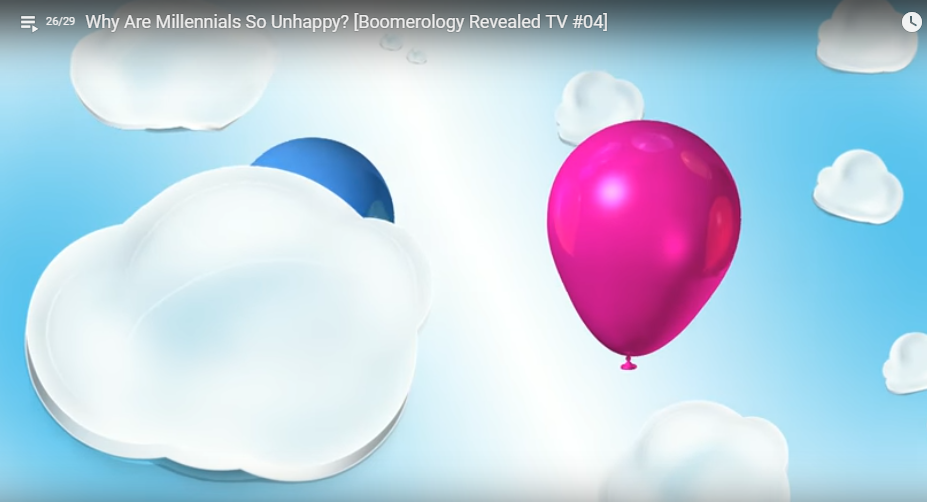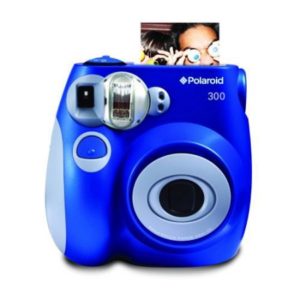Why are millennials so unhappy? Where is the pot of gold for Millennials? Stress levels are declining, see why and how to manage stress. How to deal with incontinence problems. How to find new friends, and a lot more on this show for baby boomers!

Why are millennials so unhappy? Where is the pot of gold for Millennials? Stress levels are declining, see why and how to manage stress. How to deal with incontinence problems. How to find new friends, and a lot more on this show for baby boomers!

A few days before Christmas I went to a bookstore and was impressed that most products highlighted at the front were mostly from the past. Yo-yos and books about yo-yos, old games, Ancient games etc.
Anyone knows that products get re-launched from time to time but we are seeing a major revival of products from the past. Why is that happening?
One might argue it is due to the large number of baby boomers. That is partially true. In an age where anxiety and frustration is high in the population, where people in a mall start running when they hear a noise, already thinking that some type of attack might be happening,when we spend more time feeding fear than feeling empowered, we as a society seek comfort in the past, in things to which we had an emotional connection and a time when we felt safe. A place and time were we knew how to navigate. The brain re-lives those moments and that empower us to move forward, to keep going.
It also validates our social identity and reinforce our values and the value we put into things.
I call this trend Nostalgia Wave
But this trend is not exclusive to baby boomers. It reaches millennials as well.
You can find evidence in the sheer number of vinyl records sold in 2016. A 28 year high. A industry that brought $416 million in sales. A vinyl record today is not something cheap either. During my teenager years I could get one for $10 bucks. Now, on average an album costs $40.
New vinyl records are released every day not only from old bands like the Monkees but from new artists like Justin Bieber.

Why, with all the technology available and clear sound would people go buy vinyl labels? When you can hear music from any device anywhere, you choose a media that needs a physical player? Because now we live in an age where most things are filtered in social media, where you add a selfie smiling and having fun when you are really feeling frustrated and bored. You do that and know others do too. Where do you anchor what is real? You listen to a vinyl record and they are not perfect. You can relate to that and lets face it, it makes it unique. Records have hisses and cracks, they are raw and this generation longs for real, for flaws. These records add texture to the experience.
Everything we have access today seems to be free and shareable. With a record you have a tactile experience. You can smell, open the wrapper, choose and turn to the side you want. It is a total different and real experience.
You can have a million songs in your device but that is not the same as collecting them. With vinyl records, you are a collector. Collecting is part of our nature. We like to collect what we value.

Then there is the spectacular revival of instant cameras during 2016 Christmas. Bought by Millennials like no other gear. They are not as expensive as they used to be and no, you don’t have to shake the paper for the photo to appear.
Why are Millennials so attracted to these cameras?
Because you can touch. Yes, touch and keep. Here is the tactile experience this generation longs for all the time. In this digital age, everything is somewhere, in some device or cloud. Sometimes is hard to find, sometimes it seems like it doesn’t belong to us as individuals. A printed photo is a very special moment that you want to keep and show. All other moments can go on your phone. Not the special ones, shared with special ones and that you can touch, feel and put in a special place.
This is just like before if you are a boomer but it is a new feeling if you are a Millennial and it is a good feeling. A very special memory, captured in an instant with a paper proof to keep. You can touch, look and feel that moment with your hands.
The nostalgia wave will be here for a while. Because it create peace, lowers anxiety, puts us in a safe place and give some of us a new experience.
Businesses that understand this trend can incorporate some of these aspects and give the consumer a different experience.
Online recommendations might be as influential as in-person ones, but the vast majority of word-of-mouth (W-O-M) impressions about brands occur offline, at least among Millennials (18-34). That’s according to new figures released by the Keller Fay Group, which show that some 84% of Millennials’ word-of-mouth impressions about brands take place offline – with 71% the result of face-to-face conversations (versus just 3% over social media).
Not surprisingly, digital media acts as more of a W-O-M driver for Millennials than for other adults, referenced in 25% and 19% of impressions, respectively. (Of note, social media takes a backseat to brand websites and internet ads within the digital media category.)
Second to digital media is TV, referenced in 17% of Millennials’ brand word-of-mouth conversations and 18% of all other adults’ (aged 35-69), suggesting that TV remains a force with this cohort even if they’re watching less than older generations.
Understanding how and why brands are discussed in Millennials’ conversations is particularly important given research suggesting that word-of-mouth has a high degree of influence on Millennials’ purchase decisions and tends to act as a bigger influence on consumers than any paid or owned media.
Nielsen’s most recent study indicates that Americans aged 18-24 watched a weekly average of a little less than 22 hours of traditional TV during Q1 2014. That was a 95-minute drop-off from Q1 2013, which in turn had been down by 80 minutes from the year before. In fact, in the space of 3 years, Q1 TV viewing by 18-24-year-olds dropped by a little more than 4-and-a-half hours per week. That’s a substantial amount, equivalent to roughly 40 minutes per day.
Traditional TV viewing among 18-24-year-olds in Q1 2014 was down by almost 7% year-over-year.
The decreases in viewing might reflect increasing consumption of over-the-top video, although it should be noted that the Nielsen data indicates that time spent watching traditional TV still exceeds online and smartphone video by a considerable margin, even among youth. Indeed, research suggests that online video tends to largely act as a complement rather than a replacement for traditional TV, at least for the time being.
American Millennials (18-34) spend a slight majority of their weekly media time using digital devices, and are the only generation where digital media consumption exceeds traditional media, details Experian Marketing Services in a new report. But, Millennials share a common trait with their older counterparts: of the various devices available to them, TV still rules, accounting for the single largest share of their total weekly media time.
For Millennials, TV captures about 25 hours of their 67 weekly hours of media time, or about 37% share. By comparison, TV accounts for 42% share of total weekly media time among all adults, with its consumption far higher among older generations.
TV is also the device with the largest reach for each generation, with 97% of all adults watching at least some TV on a weekly basis. While TV maintains significant reach across the generations, the same isn’t true for other devices and media. More than three-quarters – 77% – of Millennials own a smartphone, for example, compared to just 48% of Baby Boomers (50-69) and 16% of Silents (70+).
A reputation for bureaucracy and hierarchy is helping to discourage young Americans from taking government jobs; in a poll of undergraduates, just 2.4% of engineering students and less than 1% of business students listed only government agencies as their ideal employers, according to the Wall Street Journal. Just 7% of the federal workforce was younger than 30 in 2013, compared with more than 20% in 1975, leaving the government without a pipeline of young workers in an increasingly digital age.
SOURCE: U.S. Government Struggles to Draw Young, Savvy Staff
The presence of young workers appears to be necessary for the creation and growth of new firms, particularly in industries where young people have key technical skills, say Paige Ouimet of the University of North Carolina and Rebecca Zarutskie of the Federal Reserve Board. For example, in the electronics industry, a 5% increase in the share of youth in the population leads to a 1-to-2-percentage-point increase in the rate of new-firm creation, according to the researchers’ analysis of U.S. Census data.

SOURCE: Who works for startups? The relation between firm age, employee age, and growth
Hispanics are known to overindex in smartphone and tablet ownership. And while Hispanic millennials lead in smartphone content consumption, it’s the Gen Xers who are the most avid tablet users, with nearly two-thirds using such a device daily. It’s a different story among non-Hispanics, with those 60 and older dominating daily tablet activity, followed by Gen X users.
http://www.boomerologyrevealed.com Ernesto Verdugo and differences between generations. Would you use a Happe? Check it out. Some cool facts about baby boomers and a trip to memory lane.
Also some facts about sugar and your health.
Your likes shares,comments really matter and please don’t forget to subscribe.
Sign up for our monthly giveaways at http://www.boomerologyrevealed.com